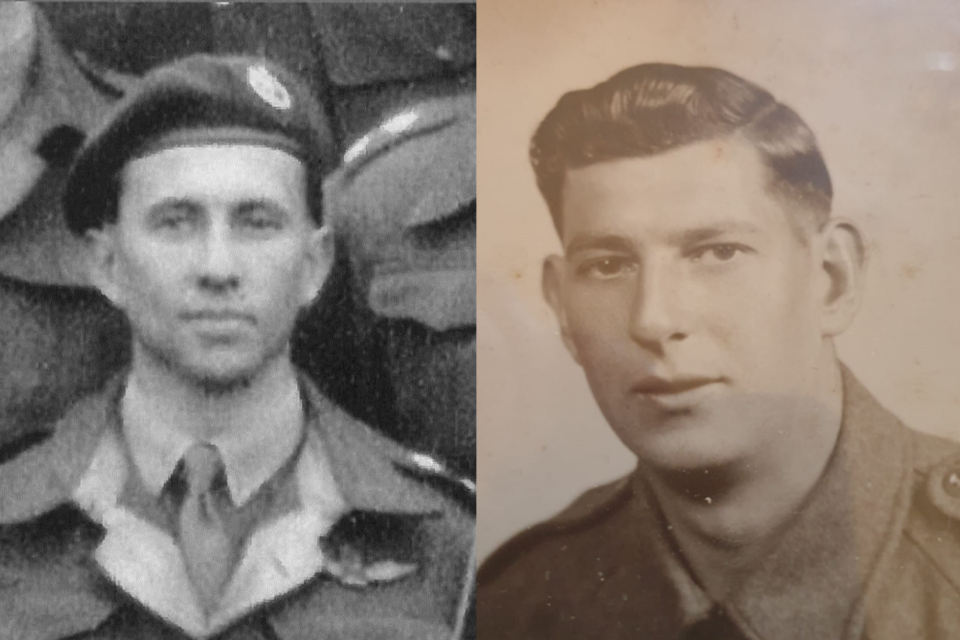Operation Market Garden was a plan conceived by Field Marshal Bernard Montgomery to hasten the end of the Second World War by opening up new routes into Germany.
The allied forces adopted a bold strategy: seize a series of crucial bridges in the Netherlands through a combination of airborne attack and ground advances.
The Battle of Arnhem - the centrepiece of the operation - exemplified both the daring and the pitfalls of the allies' approach.
British paratroopers were tasked with capturing and holding the bridge at Arnhem until reinforcements could arrive. But what unfolded was a harrowing saga of bravery met with a great loss of life for the allied forces.
The paratroopers faced fierce resistance from the well-prepared German forces, including elite Panzer tank divisions that had been underestimated by allied intelligence.
Ground forces struggled to advance as planned, leaving the airborne troops isolated and vulnerable.
But throughout the protracted and bloody engagement shone countless tales of courage and sacrifice.
Lieutenant Peter Cane
Born in Reading, Lieutenant Peter Cane was among the first wave of paratroopers to land at Arnhem during the operation's opening stages.
A seasoned combat veteran, he had already faced the harsh realities of war in Sicily and Italy before his deployment to the Netherlands.
As Lieutenant Cane led his men through the narrow streets of Arnhem, they were initially greeted by cheering Dutch citizens. However, this quickly turned into fierce combat with German troops.
Despite being mortally wounded in one of the first encounters with the Wehrmacht, Cane continued to encourage his men to remain determined.
He succumbed to his injuries shortly after the skirmish and was initially buried in a makeshift grave near where he fell.
He was 25 years old when he died.
His remains were later moved to Arnhem Oosterbeek War Cemetery, where he rests today.
Captain Lionel Queripel
Captain Lionel Queripel was a British officer who displayed extraordinary bravery during the Battle of Arnhem.
Serving with 10th Battalion The Parachute Regiment, Queripel had already seen significant action, having been evacuated at Dunkirk and during fighting in North Africa and Italy.
During the battle his unit came under intense fire from German forces. Despite sustaining a facial wound, Queripel continued to lead his men with remarkable courage.
He carried an injured soldier to safety and then returned to coordinate an assault on the enemy position.
As ammunition ran low and Germany forces pressed their advantage, Queripel ordered a strategic retreat to prevent further casualties.
His courage was later recognised with the Victoria Cross.

Lt Dermod Green Anderson and Pte Henry Moon
Lieutenant Dermod Green Anderson
Lieutenant Dermod Green Anderson was born in Durban, South Africa and moved to England in the 1930s to study architecture.
At the outbreak of the Second World War he was employed as an assistant to the architect Sir Edwin Lutyens, who had designed the Cenotaph.
In 1940, Anderson joined The Gloucestershire Regiment and completed his training as a glider pilot.
He participated in the Normandy operations and played a crucial role at Arnhem.
Tragically, he was killed near Oosterbeek on 25 September 1944 by a German mortar bomb.
His bravery was noted by his commanding officer, who recalled his efforts to rescue wounded soldiers under heavy enemy fire.
After the battle, Anderson was reported missing and his name was inscribed on the Groesbeek Memorial.
His remains were discovered during a field survey near the old church in Oosterbeek, where efforts had been made to locate lost field graves.
The identification process by the MOD Joint Casualty and Compassionate Centre and the Dutch Identification and Recovery Unit involved DNA analysis, which eventually allowed the MOD to contact Anderson's modern-day relatives.
Anderson was laid to rest on 18 September 2024 at Arnhem Oosterbeek War Cemetery in the presence of his great-nephew, a serving lieutenant colonel in the British Army.
The burial service was conducted with full military honours and attended by Armed Forces personnel who carried his coffin and performed a rifle salute.
Private Henry Moon
Private Henry Moon from Speeton, North Yorkshire, was an apprentice joiner before joining the British Army during the Second World War.
He served with 7th Battalion The Green Howards (The Yorkshire Regiment).
Moon landed in Normandy on 6 June 1944 and spent his summer advancing through France and Belgium, before reaching the Netherlands.
During the Battle of Arnhem Moon's unit faced intense combat as they attempted to hold their positions against German counterattacks.
Tragically, Moon was killed during a German mortar attack on 1 October 1944.
Moon's remains were only discovered on 12 November 2020 during roadworks on the A15 motorway.
His body was found in a shallow grave on the battlefield where he fell.
The identification process involved matching his possessions with his battalion and conducting DNA analysis, which confirmed his identity through a sample from his great-nephew David.
On 18 September 2024 Private Moon was finally laid to rest at Arnhem Oosterbeek War Cemetery.
His coffin was carried by serving soldiers of The Royal Yorkshire Regiment.
With thanks to the Commonwealth War Graves Commission.






